There’s something magical about Yaowarat Road once the sun goes down. Neon signs flicker to life, food stalls send smoke curling into the night, hungry tourists sample exotic dishes at roadside tables, local vendors compete for attention from every passing visitor, and the streets pulse with a restless energy that never seems to pause. Yet amidst the chaos, there’s a quiet sense of loneliness in many of the faces I encounter. That contrast is what draws me here to street photography tonight.
Yaowarat Road is the main strip of Bangkok’s Chinatown. Usually captured in vibrant color, I decided it would be a great place to test Kodak Tri-X pushed one and two stops—to ISO 800 and ISO 1600. My tools of choice were my Zeiss Ikon ZM rangefinder and Zeiss Biogon 35mm f/2 ZM lens. It’s a setup that has served me well in many situations, but tonight was all about testing Tri-X.
Why this test? I’d recently seen a YouTube comparison video of both films, and they looked almost identical. That made me wonder: could I achieve similar results with Tri-X at ISO 1600 to what I normally get from Double-X at ISO 800?

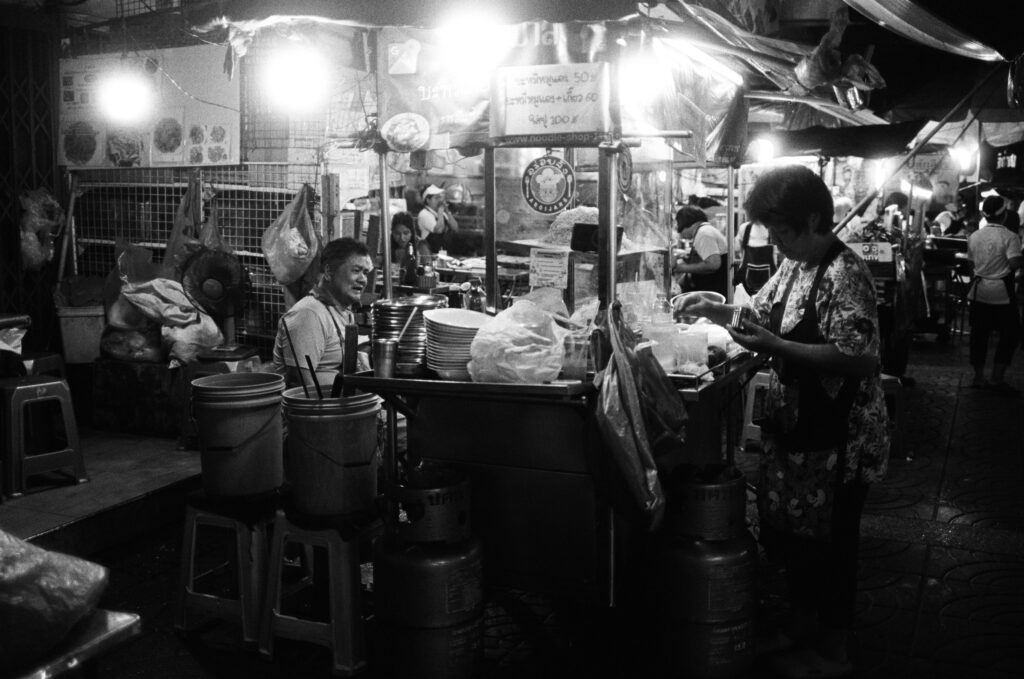
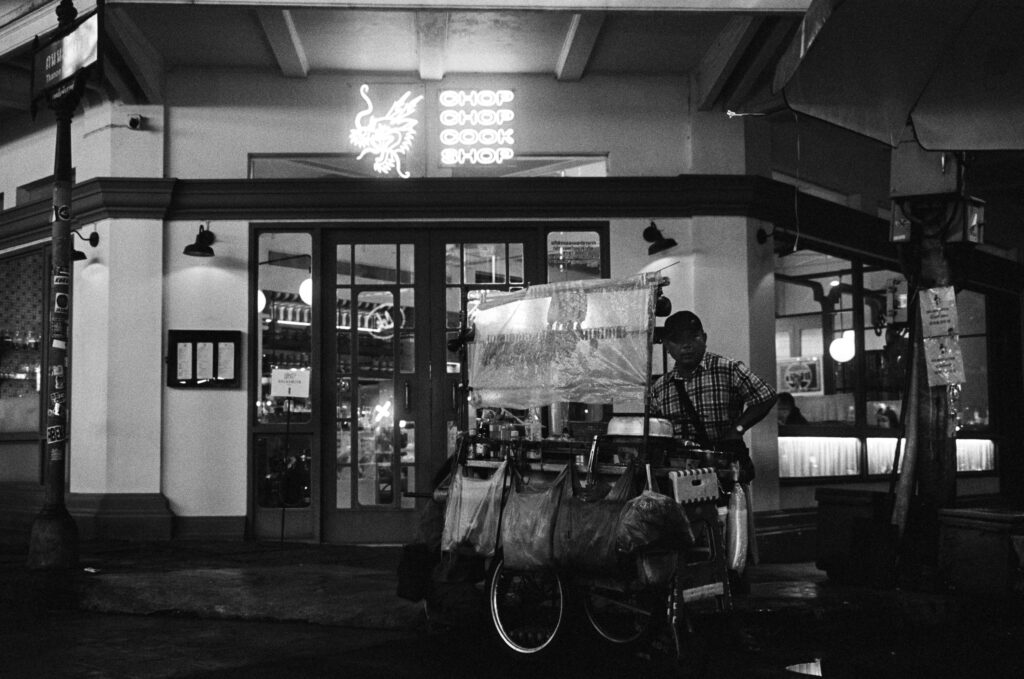
Originally introduced in 1959, Double-X has been a staple in Hollywood cinema for decades—used in classics like Schindler’s List, Raging Bull, and Casino Royale for its rich tonal range and cinematic grain. It’s also readily available here in Bangkok, Thailand, conveniently bulk-loaded into 35mm canisters. On top of being a beautiful black-and-white film, it also happens to be the cheapest 35mm film option around—color or monochrome.
Over time, I’ve come to really enjoy shooting street scenes at night, where the play of light and shadow gives life to the chaos. My go-to lens is often the 35mm f/2, but I’ve found that ISO 800 is not fast enough in many situations. Pushing Double-X to ISO 1600 gave me the speed I needed, but the results were too contrasty and lost too much shadow detail—which is what led me to test Tri-X for this shoot. Double-X is rated at ISO 250 in daylight and 200 under tungsten light, but I usually rate it at 200 for normal shooting and often push it to 400 or 800 with great success. I’ve shot over 60 rolls of Double-X in the past 12 months and love its classic cinema look.
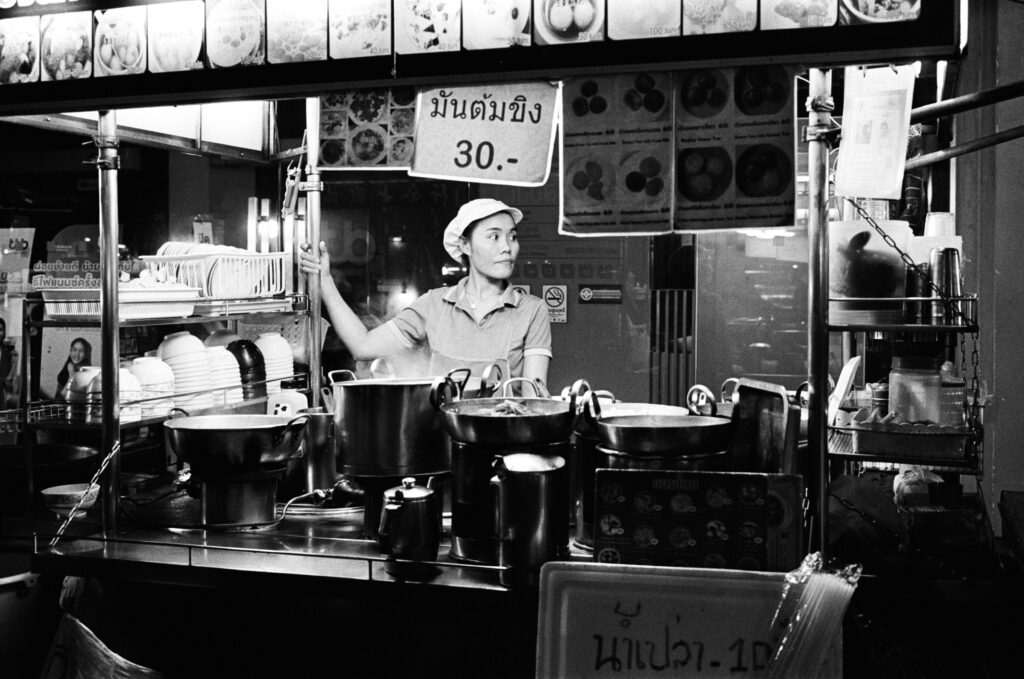
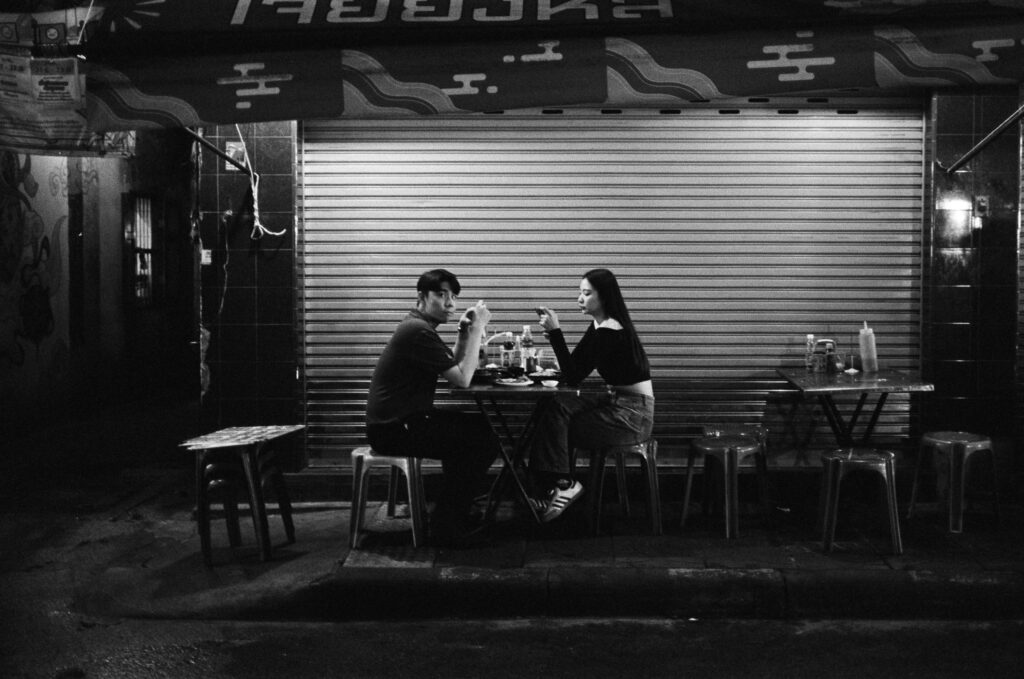
Kodak Tri-X first appeared in the 1940s as sheet film and was later released in 35mm format in 1954. It’s been used by many famous photographers throughout history, including Henri Cartier-Bresson, Sebastião Salgado, and Daido Moriyama. I’ve only shot about 20 rolls of Tri-X at its box speed of ISO 400 and had never pushed it before. Since I don’t do my own development, this experiment was as much a test of my lab’s development process as of the film itself.
I also snuck in the Tiffen Black Pro Mist 1/4 filter that I’d picked up a while ago but never actually used before to this test. I used it on the roll that was shot at ISO 1600. I think the filter adds a nice cinematic, vintage charm. The featured image was shot with Tri-X pushed +2 stops to ISO 1600 with the Tiffen Black Pro Mist 1/4 filter.
For those of you who like Tri-X but haven’t tried Double-X, I encourage you to try shooting a couple rolls if it’s an option available to you locally. My own interest in Double-X started simply because it’s the cheapest film available to me—but it’s turned out to be a great performer. If it’s easy for you to get, give it a try!
This wasn’t a scientific test. I made no attempt to control the variables or do a side-by-side comparison. The only constant was that all the shots were taken back-to-back on the same streets, and on the same night. So, what’s the verdict? Tri-X pushed +2 stops by my local lab produces excellent results—similar to what I get from Double-X rated at ISO 800. As far as I’m concerned, this is a success, and I’ll be shooting many more rolls of Tri-X whenever I need the extra speed—even though Tri-X costs about 50% more per roll.
I’ll let the photos speak for themselves. Time to buy more film!
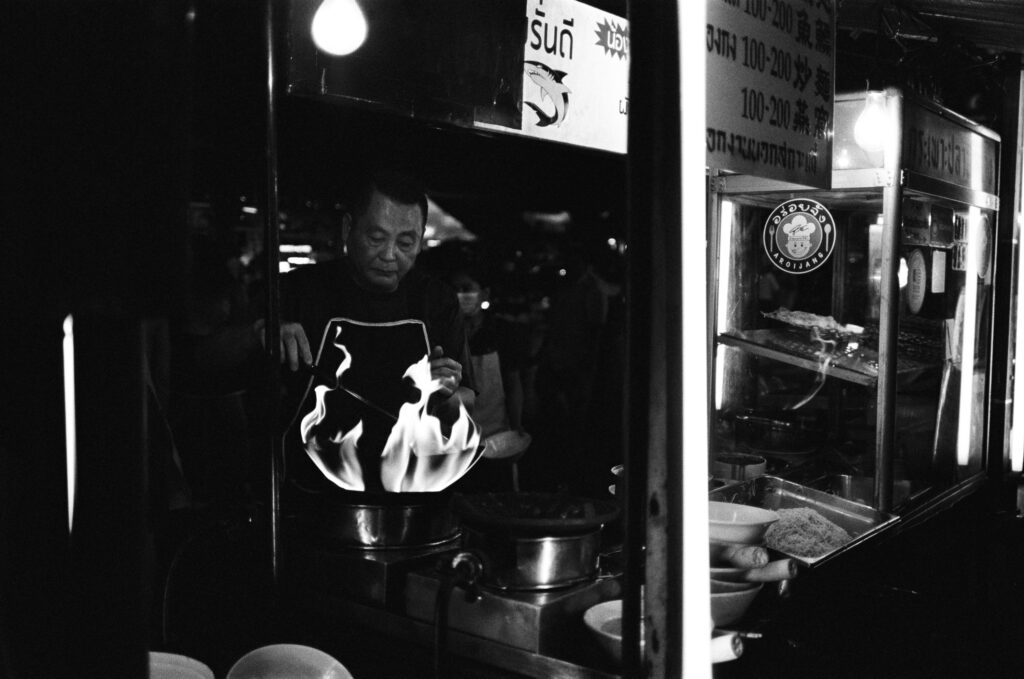


Share this post:
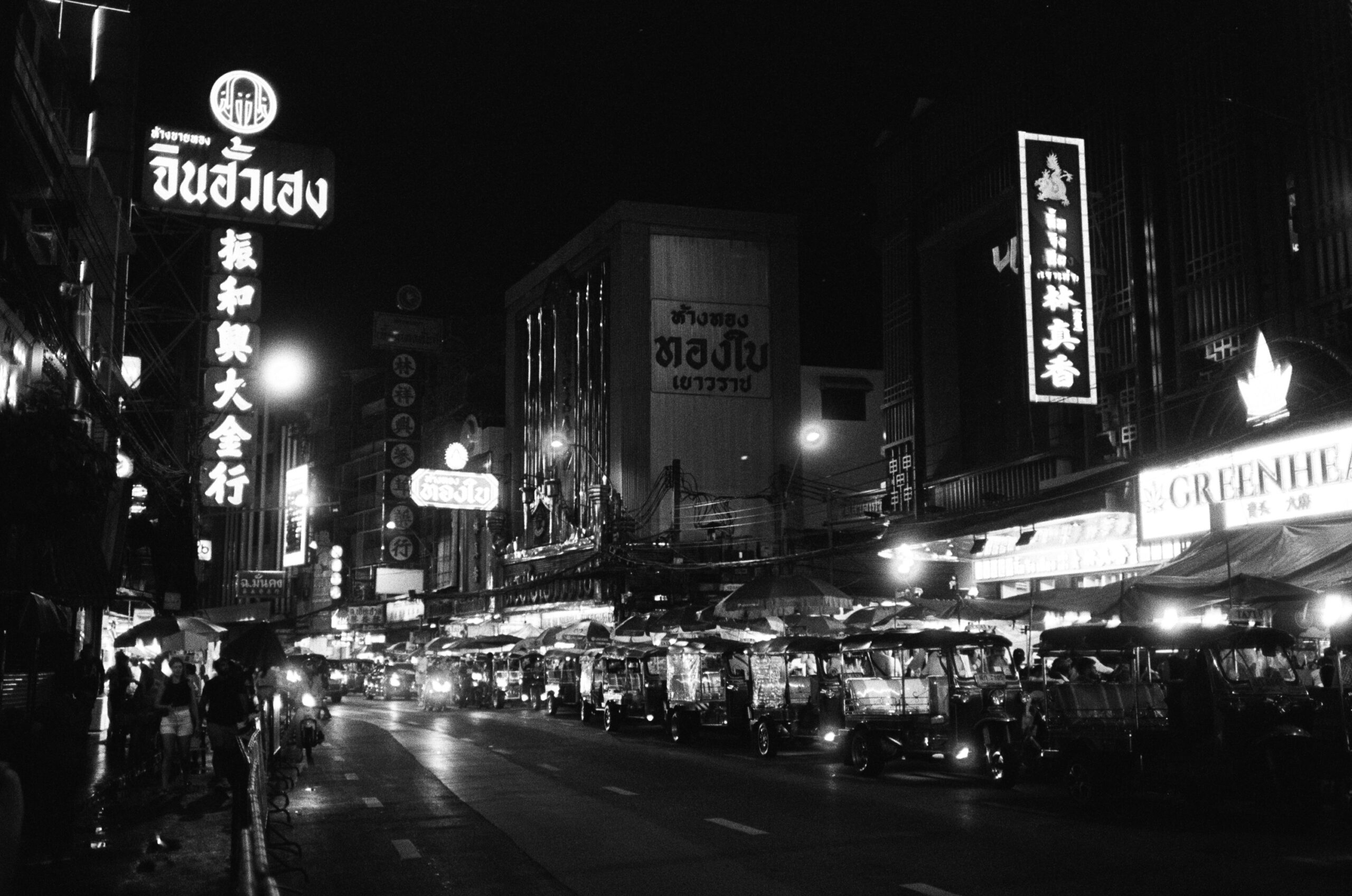


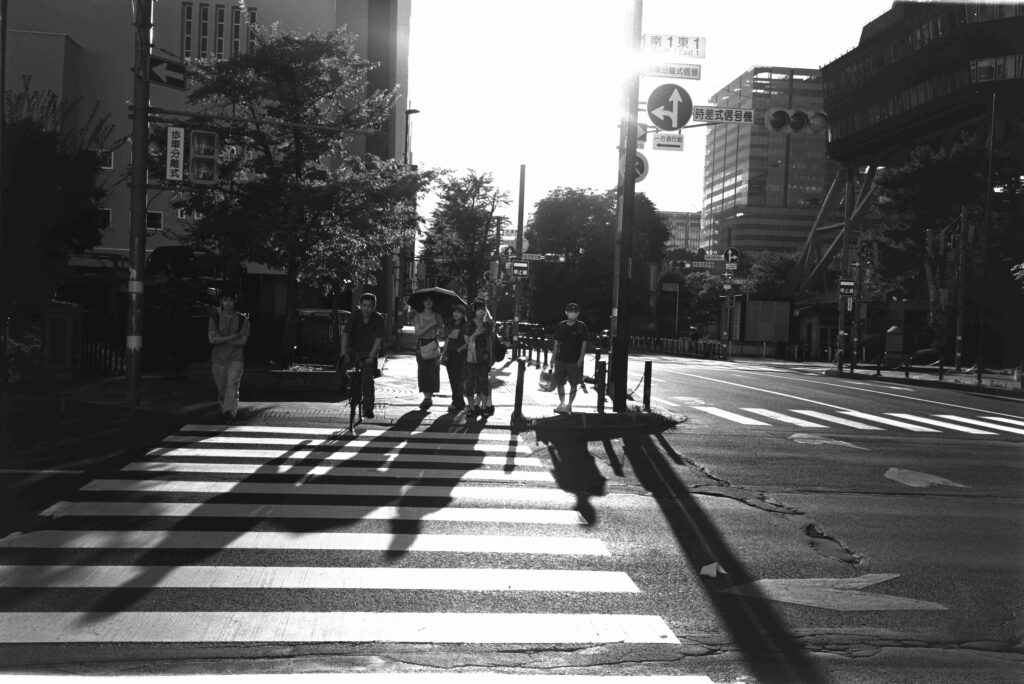

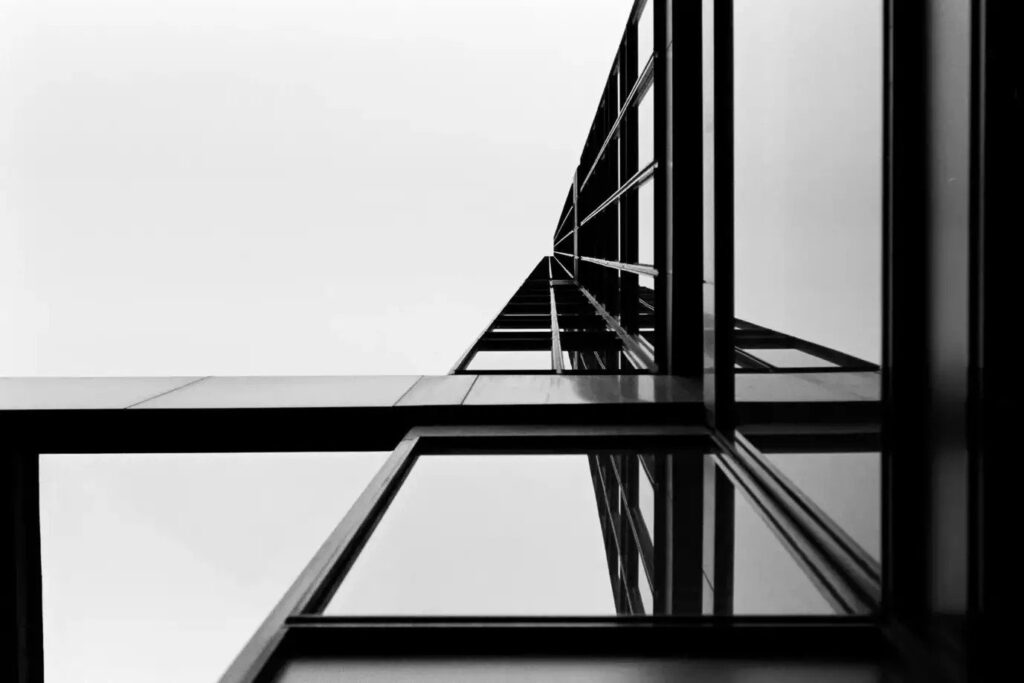


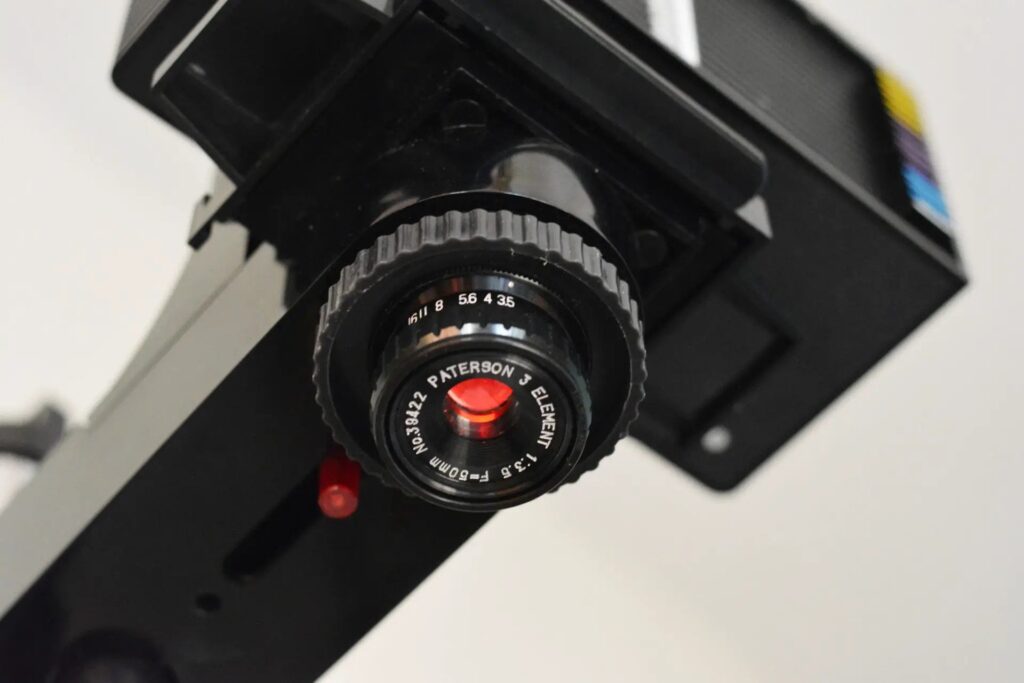
Comments
No comments found